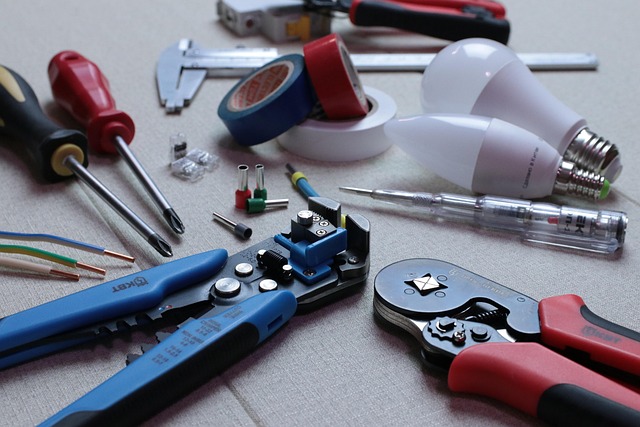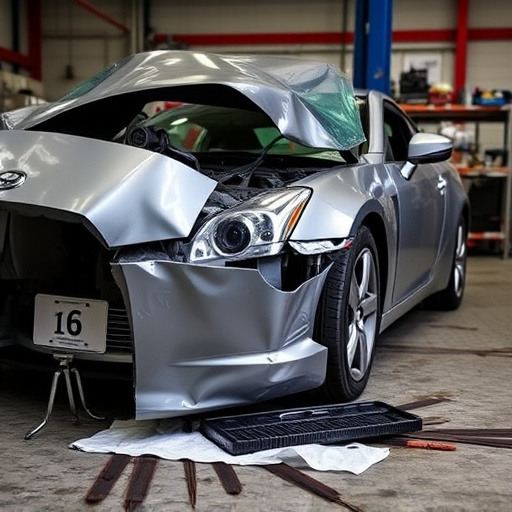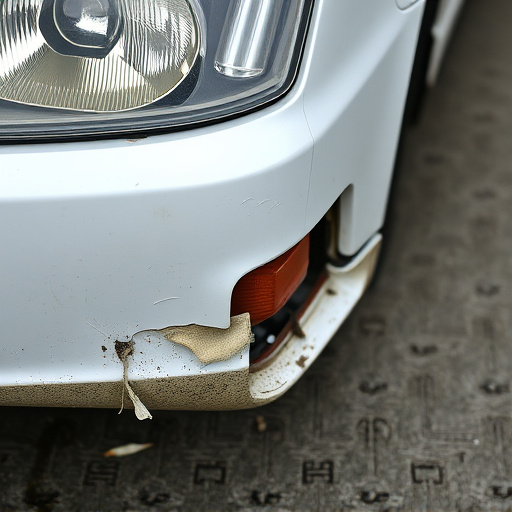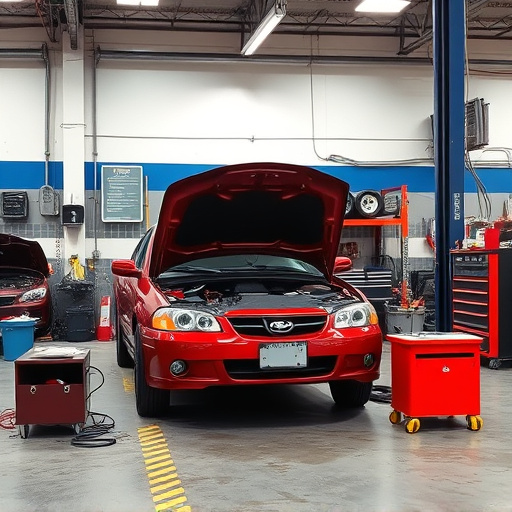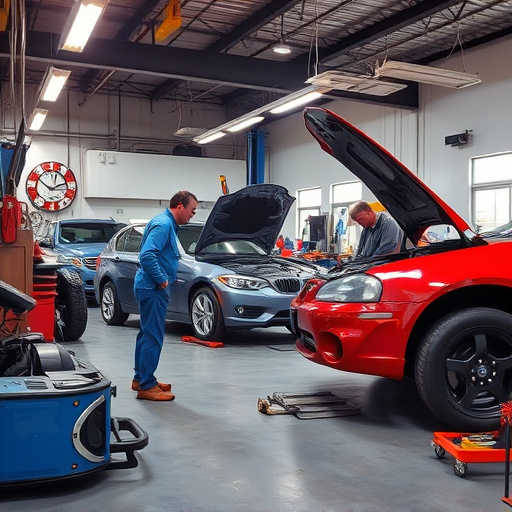Mercedes brake assist recalibration is a safety-critical process involving sensor sensitivity calibration and rigorous testing to optimize stopping power. Specialized auto centers follow OEM standards for precise adjustments to the braking system, ensuring peak performance and reliable driving experiences for Mercedes owners.
The Mercedes brake assist system is a crucial safety feature designed to enhance driver control and reduce braking distances. This article delves into the intricate process of Mercedes brake assist recalibration, a critical maintenance step ensuring optimal performance and adherence to Original Equipment Manufacturer (OEM) standards.
Through a comprehensive guide, we’ll explore the steps involved, highlighting the importance of precision and compliance for safety and vehicle longevity. Discover how this process maintains the system’s effectiveness in various driving conditions, ultimately contributing to a secure and efficient driving experience.
- Understanding Mercedes Brake Assist System
- Recalibration Process: Step-by-Step Guide
- Ensuring Compliance With OEM Standards
Understanding Mercedes Brake Assist System

The Mercedes Brake Assist System is a critical safety feature designed to enhance driver control and reduce braking distances during emergencies. This advanced technology uses sensors and actuators to detect potential collision risks and applies brakes individually on each wheel, optimizing stopping power. When the system senses a possible crash, it instantly calculates the necessary brake pressure, ensuring swift and precise intervention.
Mercedes brake assist recalibration is a process that ensures this intricate mechanism operates at peak performance. Over time, various factors can influence the system’s accuracy, such as environmental conditions, wear and tear, or after a collision. An auto collision center specializing in Mercedes vehicles offers expert collision repair services, including recalibrating the brake assist to factory original equipment manufacturer (OEM) standards. This ensures that your Mercedes maintains optimal safety performance, providing peace of mind behind the wheel.
Recalibration Process: Step-by-Step Guide

The Mercedes brake assist recalibration process involves several precise steps to ensure optimal performance and compliance with Original Equipment Manufacturer (OEM) standards. It begins with a thorough inspection of the vehicle’s bodywork, identifying any potential issues or wear and tear in the braking system. The next step is to access the brake control module, which houses the sophisticated software that manages the brake assist function. Here, specialized tools are used to connect and communicate with the module, allowing for a detailed diagnosis and subsequent adjustments.
The actual recalibration entails calibrating the sensor sensitivity, which detects wheel speed and vehicle dynamics, ensuring accurate response from the brake assist system. This is followed by testing and validating the changes through controlled scenarios in an automotive repair environment. Once the system meets the required specifications, the final step involves securing the updates to the control module, ready for the vehicle’s return to service, ensuring a reliable and safe driving experience with top-tier fleet repair services.
Ensuring Compliance With OEM Standards

Maintaining compliance with Original Equipment Manufacturer (OEM) standards is paramount when it comes to Mercedes brake assist recalibration. This meticulous process ensures that every component of the vehicle’s braking system functions precisely as designed by the manufacturer, offering drivers a safe and reliable driving experience. Adhering to OEM specifications guarantees that the recalibrated system performs optimally, without compromising on safety or performance criteria set by Mercedes-Benz.
By focusing on these standards, auto body shops specializing in Mercedes brake assist recalibration can offer top-tier services. They employ advanced techniques and tools to precisely adjust various parameters within the braking system, enhancing its responsiveness and overall efficiency. This level of expertise is crucial, especially when considering that even minor deviations from OEM guidelines could lead to suboptimal braking performance or potential safety hazards, much like how a vehicle dent repair or car body restoration done improperly can affect the structural integrity of a vehicle.
Mercedes brake assist recalibration is a vital process to ensure optimal vehicle performance and safety. By adhering to original equipment manufacturer (OEM) standards, drivers can experience enhanced braking efficiency and maintain the integrity of their vehicle’s critical systems. This meticulous recalibration procedure guarantees that every component functions in harmony, providing a smoother and more responsive driving experience without compromising on safety regulations.

